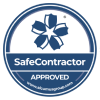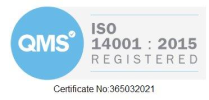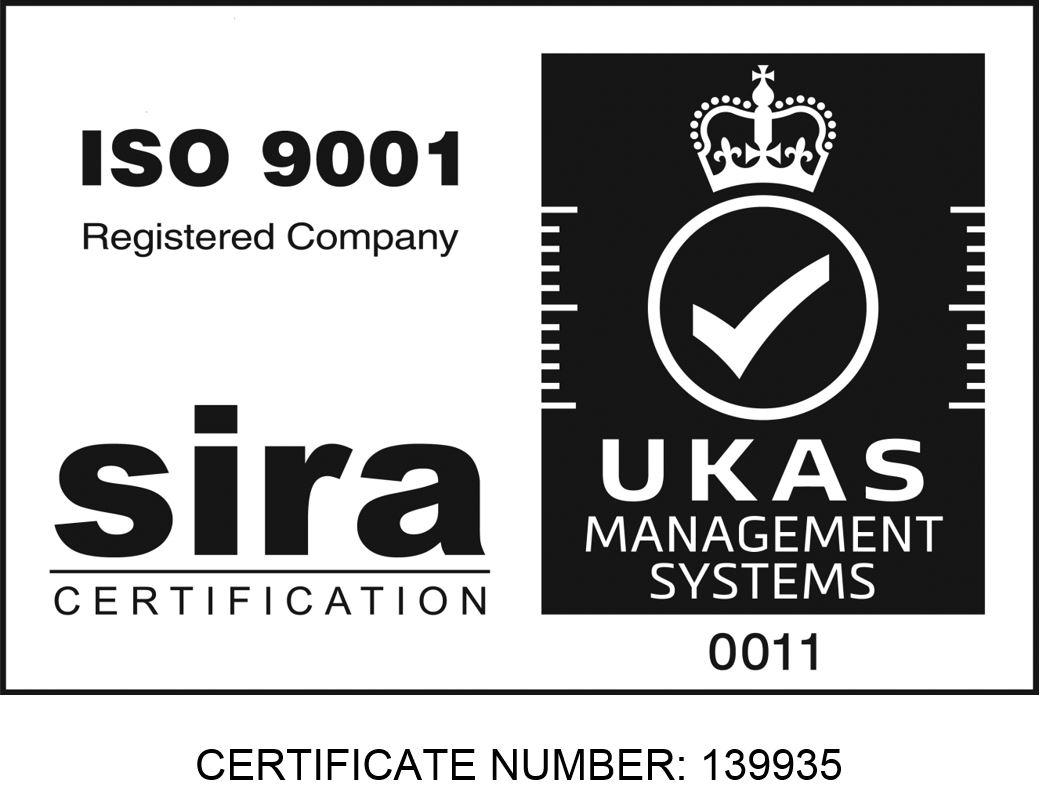
Maintenance is an essential facet of any successful operation. By optimising the functionality of assets – increasing their operational equipment effectiveness (OEE) and extending their life – operators will see myriad benefits.
These include increased uptime, enhanced safety, far greater resilience in terms of obsolescence risk, and improved sustainability.
The hierarchy
Any maintenance is better than no maintenance, but there are also tiers under the maintenance umbrella, all of which offer a sliding scale of effectiveness and return on investment.
Reactive maintenance
At the bottom of the list is reactive maintenance. ‘Repair on failure’ is, unfortunately, all too common in many industrial settings. Equipment neglect, lack of insights/knowledge or the absence of any discernible maintenance schedules often results in major or even catastrophic failure. This not only requires complete part replacements – possibly for wider damage too – but also significant downtime/service disruptions and major impacts on critical-path projects.
It may well be attractive from a short-term cost perspective, requiring negligible outlay during normal operation, but the costs of repair and the opportunity-cost penalties resulting from downtime can be significant.
Preventive maintenance?
Preventative maintenance, often called PM, involves regular check-ups, and typically includes routine-based tasks, such as cleaning, lubrication, and inspection. The rationale is that potential points of failure are addressed before they have a chance to create issues.
This type of maintenance is normally timetabled based on calendar dates, condition-based waypoints or operational hours (think of car servicing) and often affects entire machines or lines, resulting in the need for potentially lengthy shutdown. However, it is possible to segregate and/or prioritise maintenance schedules in order to shorten or curtail this downtime.
By putting in place the means to prevent potential issues, PM helps machines run more smoothly, lessening the risk of costly breakdowns and the resulting unplanned downtime.
Predictive maintenance?
The next tier is predictive maintenance, which is far more targeted, being knowledge based, as opposed to the broad-brush approach prescribed by preventative maintenance.
As the name suggests, predictive maintenance uses real time and historic operational data to proactively monitor and then ascertain equipment health. This operational data can include vibration, temperature, noise, arc-discharge detection, power consumption, and lubrication.
Data is typically collected and then shared – using IIoT (industrial internet of things) sensors and telemetry units that that are connected using common fieldbus protocols – with a data hub and logic architecture, either on site or in the cloud. To this end, computerised maintenance management systems (CMMS) are becoming more commonplace. These software suites can then be programmed to monitor and react to specific ‘early-warning’ set points that many indicate assets going out of tolerance.
By foreshadowing potential failures, operators can address specific, individual issues and keep downtime to a minimum, or undertake essential maintenance during normal shutdown periods, saving money on both parts and downtime. It’s akin to catching a small tear in your clothes before it rips entirely. As the idiom goes “a stitch in time saves nine’”.
The differences between Predictive vs preventive maintenance?
Predictive and preventive maintenance both keep things running smoothly, but they approach it differently.
Preventive maintenance is like timetable – oil changes every 10,000 miles, or air filter changes every year. It’s a set schedule based on time or usage. Predictive maintenance, on the other hand, is more like a medical check-up, scheduling maintenance only when warning signs pop up.
They both have pros and cons, and in many cases, these are shared, even if they are approached slightly differently.
Both are essentially proactive, although predictive is far more targeted. Downtime is typically shorter and general efficiency higher for predictive, and predictive can be less wasteful, as you only use the consumables required by the individual maintenance point, rather than, say, replacing oil based on a timetable as opposed to an actual need.
However, predictive can be more costly, especially if it is deployed on non-digital, legacy installations, as it requires new measurement equipment and monitoring solutions. However, with advancements and the digital evolution (and price drop) of commodity products, such as field-mounted sensors, operational data is in far greater abundance and from more data points, so greenfield installations will typically already be data rich and therefore predictive ready.
Both preventative and predictive maintenance can leverage the capabilities of a modern CMMS, although in different ways, with preventative relying on calendar-defined work orders, as opposed to predictive relying on actual operational data.
The good news is that systems can evolve and take advantage of new technologies as they are installed.
The wider benefits
At this point it is worth diving a little deeper into the many benefits that a holistic approach to maintenance can deliver.
Uptime
Uptime is probably the single most important metric in any operational equation. As part of all overall equipment effectiveness (OEE) calculations, uptime defines an installation’s key performance indicators and also plays a role in the total cost of ownership (TCO), using operational yield-based calculations.
Downtime is always unproductive, an issue compounded in industries that are time critical, heavily legislated, or classed as critical infrastructure. In these instances, there may also be downtime-related punitive measures in place, based on a lack of service or availability. One only has to think about railway outages and government fines, or the fines faced by tier suppliers relating to stopping production at just-in-time car assembly plants, where almost all components and procedures are on a critical path.
Safety
Increased safety is a natural progression from well-maintained equipment or facilities.
The catastrophic failure we touched on under the reactive maintenance header could have much wider implications than costs or downtime. How often have we read headlines relating to serious injuries and even deaths related to poorly or improperly maintained equipment?
Maintenace affects mean time between failure (MTBF) at any level of severity, but it is when safety is on the line that it plays an even more important and increasingly ethical role.
Greater resilience in terms of obsolescence risk
Upgraded hardware doesn’t just mean increased reliability and easier servicing it also means contemporary capabilities in terms of digital interactions and integration.
The addition of one smart component in a switchboard or panel can make a huge difference, not just to proactive maintenance, but also to other interactions, as the same operational data can be used to refine processes too.
New equipment also addresses obsolescence, where aging hardware is either costly to maintain, hard to source parts for, or is simply weeks from failure.
Sustainability
It is hard to get away from sustainability, and maintenance plays a pivotal role here too. Well maintained systems use less energy, waste less energy, and consume less consumables. Looking more broadly, a failed component would require replacement, which means more materials and energy are needed for fabrication and there is the potential that the part being replaced cannot be recycled or repurposed.
The future
As technology evolves, so do the capabilities available to even the simplest single switchboard application. As we mentioned before, a single smart component can make a world of difference, but it is the data it collects that adds the real value.
Artificial intelligence
In a similar vein to sustainability, artificial intelligence (AI) is playing a larger role in everyday operations management, as systems steadily evolve from automated to autonomous.
But it is in data handling that AI is cutting its teeth and making instantly recognisable and tangible inroads.
With more digitalization comes more data leading to the big data scenario where useful information can become lost in a sea of ones and zeros. AI is able to sort through the data, extract the value and then inform operators, giving them the insights they need to take and remedial action. AI in a big data scenario is far more effective than any normal person could be.
Remote maintenance
The same digital capabilities, big cloud and AI can help manufacturers and OEMs offer a wider array of value-add services too; one of which is remote interactions, either for updates and enhancements or, in this instance, monitoring and maintenance.
Baldwin & Francis is seeing greater demand for remote support and, as a result, has evolved its service offering to include a number of different options and warranty enhancements.
Technology now exists in switchboards and panels that can detect potential failures far earlier, such as seeing small temperature changes or detecting partial discharges. In a traditional hands-off approach, these may not even be seen, but with smart sensors and a cloud connection, they are spotted in real time and the proper remedial procedures can be instigated.
This type of visibility can either be deployed on site and monitored by the customer, or fed to a remote suite, manned by specialists at Baldwin & Francis, who can interrogate the data and recommend the necessary actions.
Summary
It’s never too late to implement effective maintenance. Whether you go predictive early or start with preventative straight from the off, there will always be a cost benefit, even if you start small and scale.
When you consider that the downtime costs for a gypsum mill are in the region of £10,000 to £12,000 per hour, the outlay on a few person-hours per week, or the deployment of a smart sensor package pale into insignificance compared to the costs it takes to get back to full production.
We don’t all face this level of impact, but it does bring the need into sharp relief, and shutdowns are just the half the story, we haven’t even considered the impact on brand, reputation, and goodwill.
Speak to a specialist today to see what is available to discover how you can elevate OEE to class-leading levels and prepare your operations for more futureproof and downtime-free operation.








